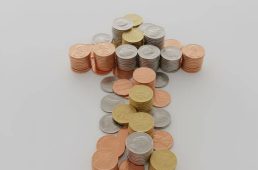Lack of economic awareness, succumbing to consumer temptations, business collapses, large loans from a variety of entities and entities without the ability to repay – all these and many other reasons lead to thousands of families, self-employed and salaried employees, sinking into heavy debts. Taking out a loan to buy a car, to renovate the kitchen, to the dream trip abroad, to the son’s bar mitzvah, to close the overdraft and of course another one for closing again, and another and another. Living in overdraft is also a debt.
The ease and availability with which loans can be obtained today creates a great temptation to take out loans without knowing exactly what their price is and where we will repay them. Sometimes we are in a general and vague belief that in the future we will find some way to repay the loan. Unfortunately, many times this belief is not realized in reality and the family finds itself in debts that grow until it sinks into them up to its neck.
The good news is that the situation is changeable. Over the years, we have met with many families who have managed to get out of debt.’ It wasn’t easy for some of them and they had to put in a lot of effort, but their lives changed drastically.
All it takes is to make a brave decision and get going. Even if along the way you encounter a harsh reality that seems impossible to change, do not despair and continue to act responsibly.
Here’s howto settledebts
Here are the steps in the debt settlement process:
Characterizationof debt
Once you’ve made the decision that you want to make a change in your life and eliminate debt, the first step is to understand what you’re up against. Which debts you know and remember well and which are ‘hidden’ debts, ones that don’t pop into your head at first thought. For example, deferred checks, future payments for credit card payments, an old parking ticket, or grocery debt. It is very important to make a complete list of all debts and not to omit a single debt from the list, however small. Neglect of small debts out of contempt, a hidden hope that they will disappear on their own, or an unwillingness to deal with them, will lead to their unnecessary growth due to an interest burden that could have been saved and turned into large and burdensome debts.
Prioritizeduties
The time has come to prepare a plan for settling the debts in order of priority. A major consideration in this regard is the need to address the most burdensome duties. These debts are not necessarily the largest debts, but those with the highest monthly repayment relative to the loan balance. Other considerations in prioritizing debts are, for example, the amount of interest, the existence or non-existence of guarantors of the debt, the nature of the relationship with the creditor (family versus state authorities, for example), and the possible consequences of deferring payment.
This is an extensive set of considerations and at this stage of setting priorities it is very important that everyone is “put on the table”.
Buildingmonthly repaymentcapacity
In order to ensure that your efforts bear fruit, it is essential to analyze the reasons for the formation of debt. If the debts were created due to poor current conduct in which expenses exceeded income, then you will not be able to handle the debts until you have reached the current balance. Simply put: you need to make sure that your total income exceeds your total expenses each month. Monthly debt repayment capacity is the difference between your income and monthly expenses. Creating such repayment capacity requires a change in your past habits: reducing expenses and sometimes increasing income. The more repayment capacity you create, the faster you’ll liquidate your debts.
Creating or increasing monthly debt repayment capacity involves effort and mobilization on the part of all family members. There is undoubtedly a challenge here, and in order to overcome it, it is always important to remember that the effort pays off and that the demanding “belt tightening” is only temporary and is expected to be released while the debts are closed.
Locatingfunds
Settling debts almost always requires money that must be located from the inner circles and outward. From your funds and available assets, such as savings for children, provident funds, study funds, an apartment or any other asset in your possession, through help from extended family or friends, to taking out a loan or grant from your employer or any other external assistance.
Taking out loans in such a case, the purpose of which is to settle the existing debts without increasing the total debts, is different from past loans you took out, which only increased the total debts.
The funds you locate will be used as a bargaining chip in negotiations to reduce the debt or adjust the amount of the repayment to your ability.
Restoringtrust
We believe that this issue is the most important on the way to settling debts. The key to solving the problem is restoring trust between the parties, both the creditor and the debtor will be easier, more efficient and above all more rewarding and worthwhile when trust returns to where it should be.
It is important to remember that the starting point is that the creditor is not an enemy, so it is important to work with the creditors in cooperation and transparency. Share with the creditors your financial situation and distress, tell them how you got into debt and also about the welcome change you decided to make, provide them with information about the additional creditors and the extent of the debts, reveal to them the economic recovery plan you are planning, introduce them to your current repayment ability and the expected changes that will soon occur that will improve your repayment ability, and repeatedly emphasize to them that you want to repay the debt but need their cooperation in order to succeed.
Above all, we must remember that money taken must be repaid, because ‘debts must be paid!’ even if it is difficult, even if the repayment is spread out over a long period of time. Non-payment of debts destroys the individual and damages mutual trust in society as a whole.
Related video: Getting out of debt and closing the overdraft |




